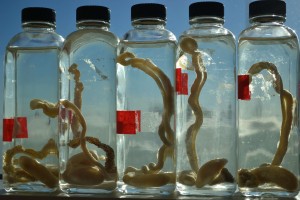In the research museum business, especially in the biological sciences, we’ve long been seeing declines in the number of positions being filled. This is something to be worried about because a) we have a lot to learn about biodiversity still, b) we’re losing said biodiversity at an unprecedented rate, and c) collections need to continue growing because they document so many important aspects of the environments we humans depend on. It’s not like other disciplines in research museums are getting fat at the expense of those disciplines losing positions; it seems to be an industry-wide phenomenon. Vicki Funk of the Smithsonian Institution recently posted an article outlining the dire situation in botany at a global scale.
On the other hand, the rising U.S. economy seems to have opened up a number of new vacancies, leading Michael Ivie of Montana State University to write an email to TAXACOM entitled “What A Great Time to be a Young Systematist”, using his observations of openings in entomology. I agree with Mike from an ornithological perspective: there are a relatively high number of positions opening up this year. Mike’s message has generated a long discussion, however, probably because we recognize that the numbers, while relatively high, are still very small in relation to the magnitude of the issues. In short, a long-declining trend is showing a brief halt and upward bump — and we all hope that collectively at least we see the decline stop and that perhaps we even regain some of those historic losses. There certainly is plenty of work to do, both in traditional biodiversity pursuits and in the new ways that collections are being used to study changes in diseases, contaminants, populations, and environmental and climatic changes.

